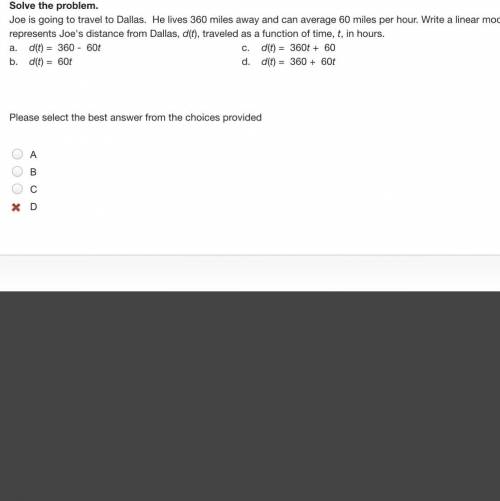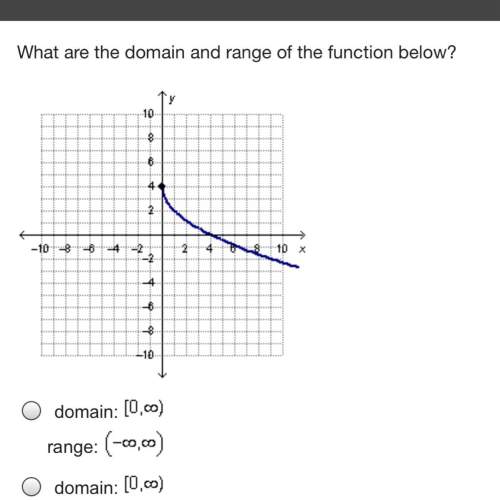
Mathematics, 11.03.2020 22:02 ling1975
Joe is going to travel to Dallas. He lives 360 miles away and can average 60 miles per hour. Write a linear model that represents Joe's distance from Dallas, d(t), traveled as a function of time, t, in hours.


Answers: 3


Other questions on the subject: Mathematics

Mathematics, 21.06.2019 17:30, tommyaberman
(least common multiples) the answer that i had in the 1st step was lcm of airline tickets sold=72. idk if that even matters but just in case. ! three co-workers are busy selling airline tickets over the phone. in an 8-hour day, charles can sell 8 airline tickets, ann can sell 9 airline tickets, and michelle can sell 6 airline tickets. step 2 of 2: what is the smallest number of 8-hour days needed for each of them to achieve the same number of sales? it takes charles . it takes . it takes .
Answers: 1


Mathematics, 21.06.2019 19:30, kklove6700
What is the result of adding the system of equations? 2x+y=4 3x-y=6
Answers: 2

Mathematics, 21.06.2019 21:30, gonzalezashley152
In a test for esp (extrasensory perception), the experimenter looks at cards that are hidden from the subject. each card contains either a star, a circle, a wave, a cross or a square.(five shapes) as the experimenter looks at each of 20 cards in turn, the subject names the shape on the card. when the esp study described above discovers a subject whose performance appears to be better than guessing, the study continues at greater length. the experimenter looks at many cards bearing one of five shapes (star, square, circle, wave, and cross) in an order determined by random numbers. the subject cannot see the experimenter as he looks at each card in turn, in order to avoid any possible nonverbal clues. the answers of a subject who does not have esp should be independent observations, each with probability 1/5 of success. we record 1000 attempts. which of the following assumptions must be met in order to solve this problem? it's reasonable to assume normality 0.8(1000), 0.2(1000)%30 approximately normal 0.8(1000), 0.2(1000)% 10 approximately normal srs it is reasonable to assume the total number of cards is over 10,000 it is reasonable to assume the total number of cards is over 1000
Answers: 1
You know the right answer?
Joe is going to travel to Dallas. He lives 360 miles away and can average 60 miles per hour. Write a...
Questions in other subjects:


English, 21.07.2020 01:01



Mathematics, 21.07.2020 01:01



English, 21.07.2020 01:01


Mathematics, 21.07.2020 01:01




